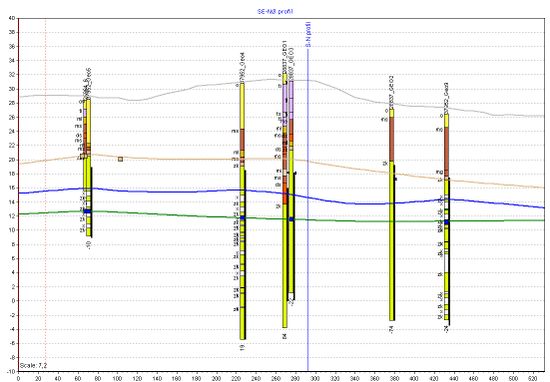Model setup
Contents
Model setup for fracture flow and transport in limestone aquifers
Modeling steps
This chapter gives step-by-step instructions for the setup of a model to simulate flow and transport in a fractured limestone aquifer.
The following list shows the typical steps to setup a model for contaminant transport in a fractured limestone aquifer:
- Conceptualization and setup of a conceptual model including geology and hydrogeology
- Formulation of the modeling objectives
- Choice of model complexity and modeling scale
- Data acquisition - measurements to obtain relevant model parameters (see list of parameters for each model)
- Delineation of the model domain based on physically meaningful boundaries (f.e. head isolines, no-flow boundaries)
- Implementation of parameters for selected units in the model domain (homogeneous/heterogeneous)
- Choice of boundary conditions for the flow and the transport model
- Setup of sources and sinks: Definition of wells
- For transient models: definition of initial conditions
- Mesh generation: Start with coarse mesh, refine later
- Simulation
- Critical evaluation of the modeling results
- Formulation of mass balances to check the model
- Model calibration
Geologic modeling
Boreholes can give valuable information about the geology.
Bits of geologic knowledge can be connected to establish a geologic model, that shows different geologic layers, to which properties can be assigned, and other relevant geologic information.

Flow chart giving an overview of the individual steps
Model reporting
Example: Setup of models for a contaminated site with a fractured limestone aquifer (Akacievej, Hedehusene)
The setup of a discrete-fracture model in 2D in COMSOL Multiphysics is described in the following documetn:
The typical workflow for modeling a contaminated site will be demonstrated using an example field site close to Copenhagen.
Example: Setup of models for a field site (Akacievej, Hedehusene)
Return to Content